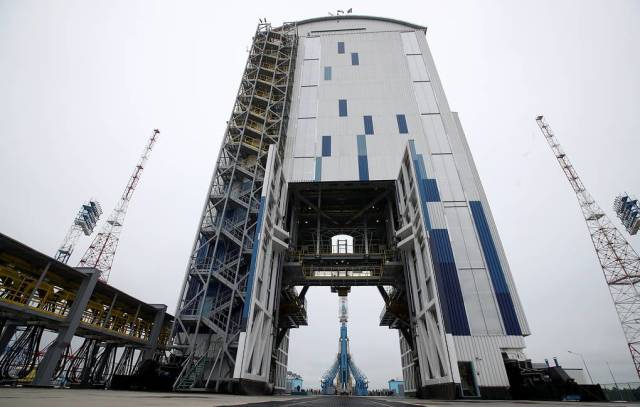In the event of a failure of one of the engines, it will be turned off, and the others will be forced, said Igor Pshenichnikov, chief expert of the Department of Advanced Programs and the Sphere Project of Roscosmos
MOSCOW, April 19. /TASS/. The system of withdrawal from the launch pad is being created for the new Russian methane launch vehicle "Amur", it will be triggered in the event of a launch accident. This was reported to TASS by the chief expert of the Department of Advanced Programs and the Sphere Project of the State Corporation Roscosmos, responsible for the implementation of the Amur-LNG project, Igor Pshenichnikov.
"We plan to implement a system of withdrawal and hot backup in the Amur launch vehicle," Pshenichnikov said.
The specialist said that in the event of a failure of one of the engines, it will be turned off, and the others will be forced. At the same time, the possibility of completing the mission is even considered. "In this case, the stage will not be returned, it flies away in a one-time form," Pshenichnikov explained.
If the failure occurs directly during the launch or close to the ground, it will not be possible to withdraw the rocket due to the large mass. Therefore, the carrier will be moved to a safe distance so that the launch pad is not damaged.
In October last year, Roscosmos and the Progress RCC signed a contract to develop a preliminary design of a space rocket complex with the first Russian reusable methane-powered rocket, the Amur. The rocket will receive a returnable first stage and will be launched from the Vostochny cosmodrome in the Amur region. In February, the General Director of the Progress Rocket and Space Center (part of Roscosmos) Dmitry Baranov told reporters that the preliminary design of the Amur methane launch vehicle is planned to be completed in the third quarter of 2021.
The "Amur" with a reusable return stage will be able to launch up to 10.5 tons of payload into low Earth orbit, compared to 8.5 for the Soyuz-2 series of rockets.

